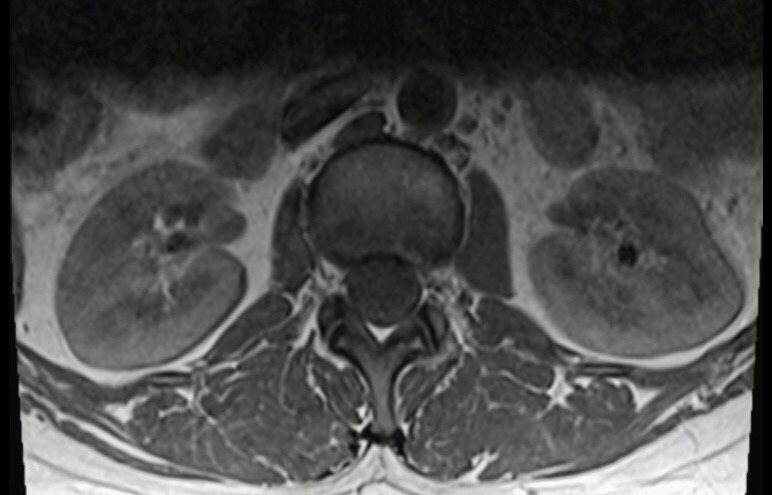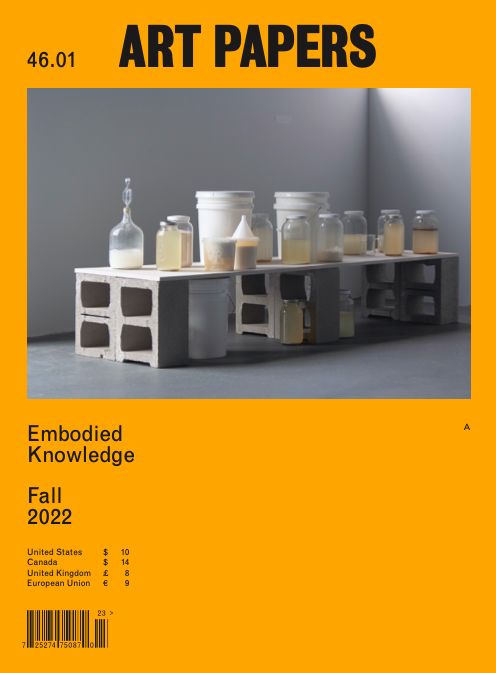Embodied Knowledge

Share:
With this issue, we begin the 46th volume of ART PAPERS, in which each of the four issues therein explores various forms of knowledge: embodied knowledge, non-anthropocentric awareness, artificial intelligence, and planetary thinking. This issue probes comprehension gained through embodied experience, somatic knowledge, and those who reject traditional Western logocentric forms of knowledge. This issue centers the human body as the source of understanding, of distinguishing truth, and of mediating history.
In the Western world we tend to separate the self from the body. We talk about inhabiting our bodies—wearing them, driving them around, or even “dropping” them upon death—and, of course, this viewpoint derives from spiritual/religious notions of a separate and transcendent soul, the seat of our being that will one day depart from our otherwise inert bodies. This separation informed European enlightenment philosophies that have been disseminated throughout the world, spread and driven by colonialism.
The resulting binary—whether expressed as mind versus body, DNA versus viscera, or soul versus meat—has long been used to discredit knowledge gained through lived experience, sensorial perception, and body memory. Apart from the broad cultural implications of centering embodied and experiential aspects of cognition, there are the intimate realities of how we grapple with our own individual experiences of embodiment, including illness, disability, injury, and that elusive mind-body chimera: pain.
I’ve been guilty of belief in this binary—discrediting my own pain from a spinal injury until it became debilitating. I entertain such thoughts as, “This pain isn’t real, it’s just my own weakness. It’s all just in my head.” The constant struggle to believe and validate what my body tells me is one of the strangest aspects of chronic pain—and one that I recognize is culturally informed by a complex intersection of, as bell hooks coined it, “white hetero-patriarchal capitalism” mixed with resulting ableism. I fight it, but its hooks are set deep.
Yet many artists have done—and continue to do—the work of mending the divide and of sharing somatic wisdom. Whether as image; as performative vehicle; or as metonym for a myriad of social, racial, and cultural experiences, bodies appear across widely varied artistic practices: sensual bodies, defiant bodies, fat bodies, thin bodies, bodies that uphold norms, and bodies that, just by being, resist and deconstruct those norms, bodies withstanding the strains of durational excess and bodies at rest—each capable of asserting radicality, liberation, and beauty.
In “All My …/All My—,” Dinah Ryan grapples with these intersections in her examination of Designing Motherhood as she feels her way through the labyrinth of reproductive health. What she finds along the way is an acknowledgment of the deeply individual complexity of experience within the collective terrain of reproductive bodies. Along the way, Ryan addresses what she describes as a cult of the unborn. Theodore Kerr explores acts of memorialization, and of remembrance of absent bodies—those who were lost, forgotten, left behind in the long history of the ongoing HIV pandemic in “Gone but Not Disrespected.”
Guadalupe Maravilla’s art weighs themes of trauma and care via works that address displacement, migration, disease, and healing. Two core experiences form the foundation for these explorations: As a child, Maravilla was among a group of unaccompanied minors fleeing on foot the civil war in El Salvador, and as an adult, he overcame colon cancer. Through a variety of mediums, Maravilla’s multidisciplinary work returns to these traumas, seeking to understand and heal. For ART PAPERS, Maravilla produced six new works that recount—in English and Spanish—three of the artist’s past performances.
Nathan Lee tracks filmmaker David Cronenberg’s mutinous bodies in his essay “Insurrectional Evolution—The Cronenbergian Revisited.” Re’al Christian speaks with artist TJ Shin about how their works seek and articulate boundaries between the human body and other forms of life, particularly that of flora. Their work connects ideas of transplantation, invasiveness, cultivation, and pestilence—as applied to people and to plants—to colonial projects of power and control.
Finally, for our glossary term, Ed Hall ponders a body part—one which, like opinions, we all have. In this “Anal (adj.)” entry, Hall delves the depths of our most hidden orifice, seeking its potential as a portal to ecstatic transcendence.
This issue’s reviews grapple with two of this year’s most controversial exhibitions—documenta fifteen and the Berlin Biennale—alongside considerations of three compelling solo exhibitions in Atlanta, Boston, and Amsterdam. As always, this issue’s theme will be expanded through online exclusives and additional reviews on ARTPAPERS.org.
Sarah Higgins
Editor + Artistic Director
editor@artpapers.org
